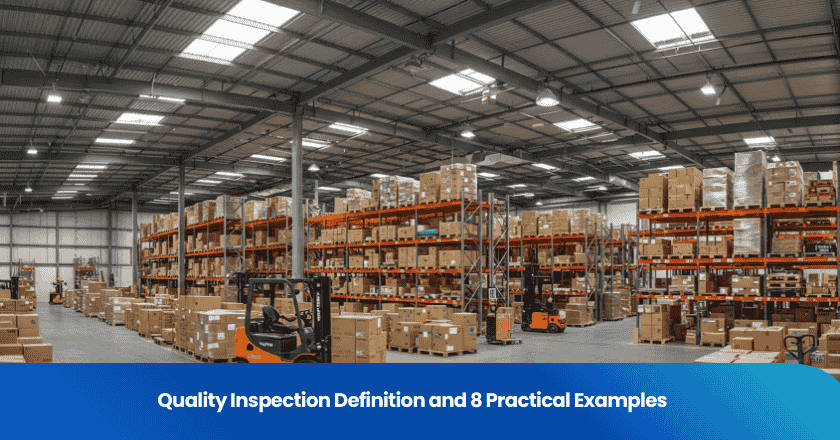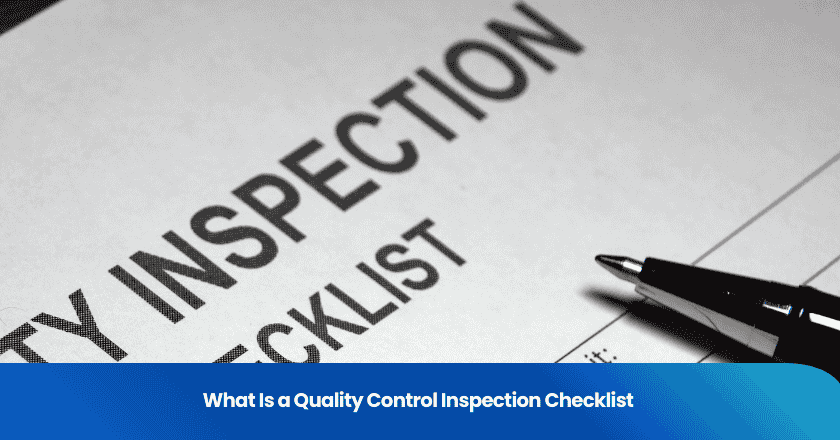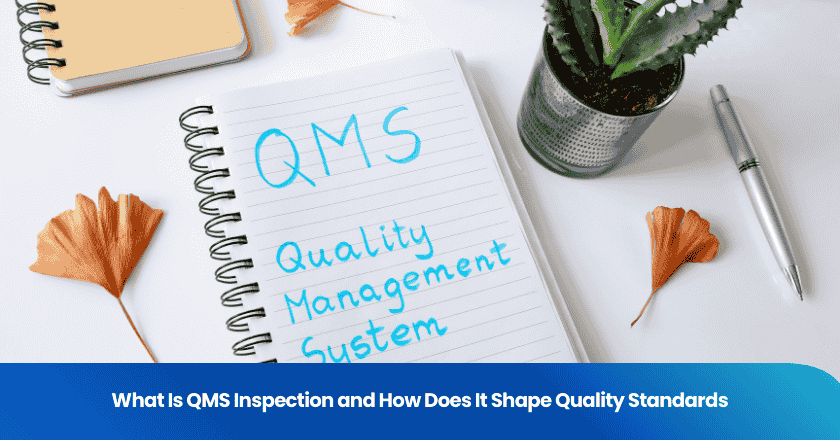
A clear quality inspection definition sets the foundation for understanding how businesses maintain product standards. Quality inspection involves systematic activities designed to assess, measure, and verify that materials or products meet established quality criteria. This process ensures that each inspection identifies defects, prevents errors, and upholds customer expectations. The main types focus on different stages of production, such as pre-production, in-process, and final inspection. Quality remains crucial across industries, as it protects consumers and supports business reputation.
Key Takeaways
- Quality inspection checks products at different stages to ensure they meet set standards and prevent defects.
- There are many types of inspections, like pre-production, during production, and pre-shipment, each helping catch problems early.
- Different industries use quality inspection to keep products safe, reliable, and high quality, from food to electronics.
- Third-party inspections add unbiased checks that help companies meet regulations and build trust with customers.
- Regular quality inspections improve safety, reduce waste, and boost customer satisfaction by ensuring consistent product quality.
Quality Inspection Definition
Purpose
A clear quality inspection definition helps organizations understand the foundation of quality control. The main purpose of inspection is to verify that products or services meet established quality standards. Inspection acts as a checkpoint in the quality control process. It ensures that each item aligns with the required standards before reaching the customer. Quality assurance depends on inspection to confirm that the production process follows the correct procedures. Inspection supports quality management by identifying defects early. This process reduces the risk of non-conforming products entering the market. Quality inspection definition also guides teams in maintaining consistency and reliability.
Note: Inspection serves as a bridge between quality control and quality assurance. It helps organizations achieve their quality goals and maintain customer trust.
Key Elements
Several key elements define a strong quality inspection definition. These elements form the backbone of any quality control system:
- Standards: Organizations must set clear quality standards. These standards describe the acceptable level of quality for each product or service.
- Inspection Criteria: Teams use specific criteria to judge if an item meets the standards. These criteria support consistent quality control.
- Documentation: Accurate records of inspection results help track quality trends. Documentation supports quality management and quality assurance.
- Qualified Inspectors: Skilled personnel carry out inspections. Their expertise ensures that the inspection process remains reliable.
- Feedback Loop: Inspection results feed back into the quality management process. This loop helps improve future products and processes.
A robust quality control system relies on these elements. The types of quality control used may vary, but the focus on standards and quality remains constant. Quality inspection definition, quality assurance, and quality management all work together to uphold the highest standards in every industry.
Types of Inspection Services
A strong quality control system relies on several types of inspection services. Each service targets a specific stage in the production or supply chain. These inspections help companies maintain high quality and safety standards.
Pre-Production Inspection
Pre-production inspection takes place before manufacturing begins. Inspectors review raw materials, components, and production processes. They check if suppliers meet quality requirements. This inspection helps prevent defects before mass production starts. Many companies use pre-production inspection to verify that materials match specifications. This step supports quality control by reducing risks early in the process.
During Production Inspection
During production inspection, also called in-process inspections, occurs while manufacturing is underway. Inspectors examine samples from the production line. They look for defects, measure dimensions, and test product functions. This inspection allows teams to catch problems before they affect the entire batch. During production inspection improves quality control by identifying issues in real time.
Pre-Shipment Inspection
Pre-shipment inspection, sometimes known as final inspection, happens after production finishes but before shipping. Inspectors check finished goods for quality, quantity, and packaging. They ensure products meet customer requirements. Pre-shipment inspection acts as the last checkpoint in quality control. This inspection reduces the risk of defective products reaching customers.
Container Loading Supervision
Container loading supervision ensures that products load correctly into shipping containers. Inspectors monitor the loading process, check packaging, and verify quantities. This inspection prevents damage during transit and confirms that the right products ship to the correct destination. Container loading supervision supports quality control by safeguarding goods during transportation.
Visual Inspection
Visual inspection relies on trained inspectors to examine products for surface defects. They look for scratches, dents, or color inconsistencies. This inspection type forms the basis of many quality control programs. Visual inspection works well for identifying obvious flaws quickly.
Measurement Inspection
Measurement inspection uses tools and instruments to check product dimensions. Inspectors compare measurements to technical drawings or standards. This inspection ensures that parts fit and function as intended. Measurement inspection plays a key role in quality control for industries with tight tolerances.
Automated Inspection
Automated inspection uses machines, sensors, or cameras to perform quality checks. These systems can conduct first article inspection, full inspection service, and final inspection with high speed and accuracy. Automated inspection supports quality control by reducing human error and increasing efficiency. Many factories use automated inspection for testing, measurement, and visual checks.
Note: Companies often combine several types of inspection services to create a comprehensive quality control strategy. Each inspection, from pre-production inspection to final inspection, strengthens product quality and safety.
Quality Inspection Services in Practice
Manufacturing
Manufacturing companies rely on quality inspection services to maintain product standards. Inspectors examine raw materials, components, and finished goods. They check for defects, measure dimensions, and verify compliance with technical specifications. For example, in an electronics factory, inspectors test circuit boards for faulty soldering and incorrect assembly. These inspections help manufacturers prevent defective products from reaching customers. Quality inspection services ensure that every item meets safety and performance requirements.
Tip: Regular inspections in manufacturing reduce waste and improve production efficiency.
Automotive
Automotive plants use quality inspection services at multiple stages. Inspectors assess incoming parts, monitor assembly lines, and evaluate completed vehicles. They look for issues such as paint imperfections, misaligned panels, and faulty wiring. In a car assembly plant, inspectors use measurement tools to check engine components for precise tolerances. These inspections protect drivers by ensuring vehicle reliability and safety. Quality inspection services in the automotive industry support regulatory compliance and customer satisfaction.
Food Processing
Food processing facilities depend on quality inspection services to guarantee product safety. Inspectors examine ingredients, monitor hygiene practices, and test finished products for contaminants. For instance, in a dairy plant, inspectors check milk for bacteria and verify that packaging meets cleanliness standards. These inspections prevent foodborne illnesses and ensure that products meet health regulations. Quality inspection services help food processors maintain consumer trust and avoid costly recalls.
| Inspection Type | What is Inspected | Why It Matters |
|---|---|---|
| Visual Inspection | Packaging, appearance | Prevents contamination |
| Measurement Inspection | Ingredient quantities | Ensures consistency |
Textile
Textile factories implement quality inspection services to uphold fabric standards. Inspectors review raw fibers, monitor weaving processes, and assess finished garments. They look for color consistency, stitching accuracy, and material strength. In a clothing factory, inspectors perform visual inspections to spot dye irregularities and loose threads. These inspections help textile producers deliver durable, attractive products. Quality inspection services in textiles reduce returns and enhance brand reputation.
Construction
Construction projects require quality inspection services to ensure structural integrity. Inspectors evaluate building materials, monitor construction techniques, and verify compliance with safety codes. For example, in a commercial building project, inspectors check concrete strength and alignment of steel beams. These inspections prevent accidents and support long-term durability. Quality inspection services in construction protect workers and future occupants.
Note: Inspections in construction often involve both visual and measurement methods to confirm project specifications.
Pharmaceutical
Pharmaceutical companies use quality inspection services to safeguard public health. Inspectors examine raw chemicals, monitor production environments, and test finished medicines for purity. In a tablet manufacturing facility, inspectors conduct automated inspections to detect foreign particles and verify dosage accuracy. These inspections ensure that medications meet strict regulatory standards. Quality inspection services in pharmaceuticals prevent harmful products from entering the market.
Furniture
Furniture manufacturers apply quality inspection services throughout production. Inspectors assess wood quality, monitor assembly, and check finished items for stability. In a furniture workshop, inspectors use measurement tools to verify that tables and chairs meet design specifications. Visual inspections identify surface defects such as scratches or uneven finishes. These inspections guarantee that furniture is safe, functional, and visually appealing. Quality inspection services help manufacturers reduce returns and increase customer satisfaction.
Semiconductor
Semiconductor plants depend on quality inspection services to produce reliable electronic components. Inspectors examine silicon wafers, monitor cleanroom conditions, and test microchips for defects. Automated inspections use advanced imaging systems to detect microscopic flaws. In a chip fabrication facility, inspectors verify that circuits meet precise electrical standards. These inspections support high performance and prevent costly failures. Quality inspection services in the semiconductor industry drive innovation and maintain global competitiveness.
Callout: Semiconductor inspections require specialized equipment and expertise due to the complexity of microelectronics.
Third-Party Quality Inspection
Benefits
Third-party quality inspection plays a vital role in modern supply chains. Companies use third-party services to ensure products meet strict standards at every stage. These independent inspectors bring objectivity to the process. They do not have a stake in the outcome, so their evaluations remain unbiased. Third-party teams check products against industry standards, customer requirements, and regulatory guidelines. This approach helps companies avoid conflicts of interest and maintain trust with clients.
A third-party quality inspection often uncovers issues that internal teams might overlook. Inspectors use advanced tools and follow established standards to verify product quality. They document findings in detailed reports, which help companies improve processes. Third-party inspections also support compliance with international standards. Many industries require proof that products meet safety and quality standards before entering the market.
Note: Third-party quality inspection increases transparency and builds confidence among buyers, suppliers, and regulators.
When to Use
Companies choose third-party quality inspection in several situations. When launching a new product, third-party inspectors verify that all materials and processes meet standards. During supplier selection, businesses rely on third-party teams to assess potential partners. This ensures suppliers can deliver goods that match required standards.
Third-party inspection becomes essential when exporting goods. Many countries demand proof that products meet their standards before allowing entry. Companies also use third-party services when they lack in-house expertise or resources. In high-risk industries, third-party inspection reduces liability by confirming compliance with safety standards.
A summary table highlights common scenarios:
| Scenario | Why Use Third-Party Inspection? |
|---|---|
| New product launch | Ensure all standards are met |
| Supplier evaluation | Verify supplier meets standards |
| Export requirements | Meet international standards |
| Limited internal resources | Access third-party expertise |
| High-risk industries | Confirm safety and compliance |
Third-party quality inspection helps organizations maintain high standards, reduce risk, and achieve global market access.
Why Quality Inspection Matters
Product Safety
Quality inspection forms the backbone of product safety. Inspectors use testing and measurement to confirm that products meet strict quality standards. They check for hazards and ensure compliance with safety regulations. Quality control teams rely on inspection to identify risks before products reach consumers. Standards guide every step, from raw material selection to final testing. Quality assurance processes reinforce these efforts, making sure that only safe products enter the market. Product quality and safety depend on thorough inspection and adherence to standards.
Reducing Defects
Inspection plays a critical role in reducing defects. Quality control specialists perform regular testing at each production stage. They compare results to established quality standards. When inspectors find deviations, they take corrective action. This approach prevents defective items from advancing through the supply chain. Quality assurance teams document findings and use them to improve processes. Consistent inspection and testing help companies maintain high standards and minimize waste.
Regulatory Compliance
Regulatory compliance requires strict adherence to quality standards. Inspection teams verify that products meet all legal requirements. They conduct testing to ensure conformity with industry regulations. Standards set by authorities guide every inspection. Quality control and quality assurance departments work together to document compliance. Testing records provide evidence during audits. Companies that follow quality management principles avoid penalties and maintain their reputation.
Customer Satisfaction
Customer satisfaction depends on reliable quality control. Inspection ensures that products meet customer expectations for quality and performance. Testing confirms that items function as intended. Standards define what customers should receive. Quality assurance teams monitor feedback and adjust processes as needed. Inspection results support continuous improvement in quality management. Satisfied customers return and recommend products to others.
Tip: Companies that invest in inspection and testing build trust with customers and regulators.
Quality inspection ensures products meet established standards at every stage of production. The main types—such as pre-production, during production, and pre-shipment inspections—address different points in the supply chain. Each industry benefits from tailored inspection services that protect safety and reputation.
Tip: Companies should evaluate their processes and select the inspection type that best supports their quality goals. Quality inspection remains essential for consistent results and customer trust.
FAQ
What is the main goal of quality inspection?
Quality inspection aims to ensure products or services meet established standards. Inspectors identify defects, verify compliance, and help companies deliver safe, reliable goods to customers.
How often should companies perform quality inspections?
Companies should schedule inspections at key production stages. Frequency depends on industry requirements, product complexity, and risk factors. Regular inspections help maintain consistent quality.
Who conducts quality inspections?
Qualified inspectors or trained quality control staff perform inspections. Some companies use third-party inspection services for added objectivity and expertise.
Can automated systems replace human inspectors?
Automated systems handle repetitive tasks and detect certain defects quickly. Human inspectors remain essential for complex evaluations and final decision-making.
Grow your business with TradeAider Service
Click the button below to directly enter the TradeAider Service System. The simple steps from booking and payment to receiving reports are easy to operate.



